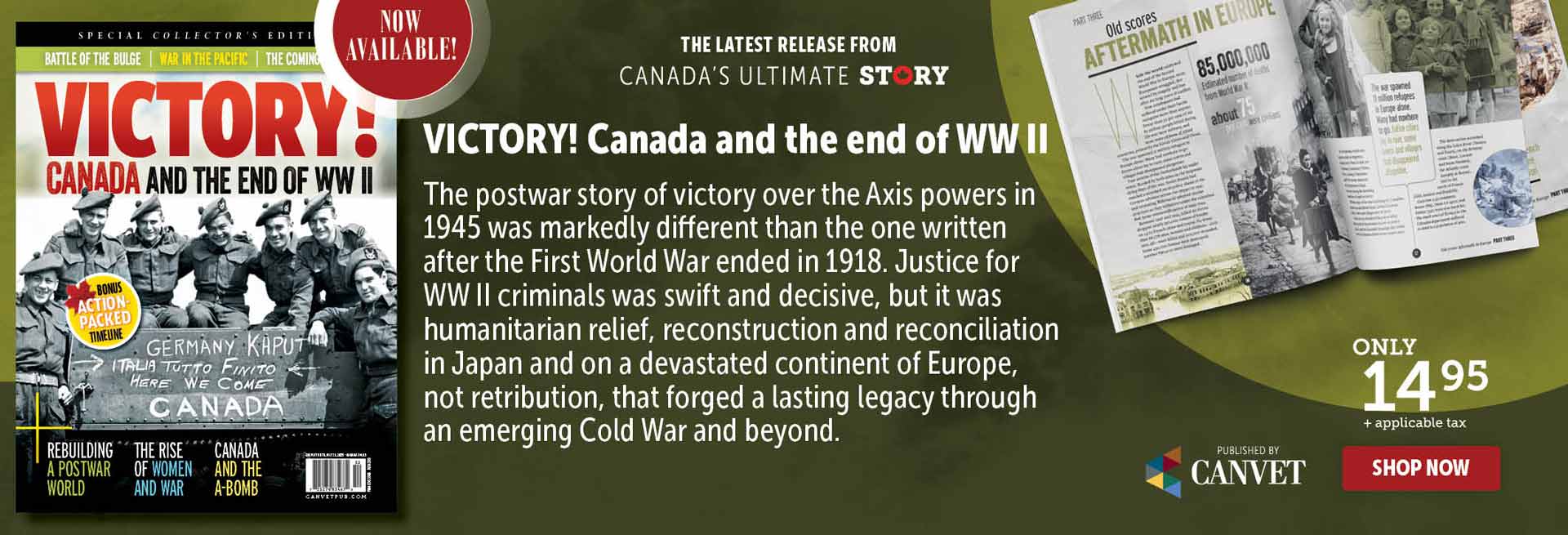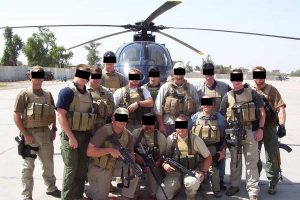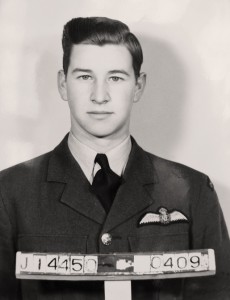 |
The Canadian Forces, with its long and commendable wartime and peacetime history, is gearing up for what could be one of its toughest battles yet. It has embarked on a campaign to recruit enough people to meet its far-flung commitments and to prevent a hard core of experienced members from leaving the service for better pay and working conditions. And while Canadian Forces officials and their political bosses say the military is stretched thin but still meeting those commitments, they also go along with defence analysts who believe that the staffing shortage could turn into a crisis if efforts to attract new talent fail.“Yes, we have a shortage of personnel,” says Lieutenant-General Christian Couture, the military’s assistant deputy minister of human resources. “Some trades are in distress. We have to look at both retention and recruitment. If not, we will end up in a crisis.”
Last year, the Forces recruited approximately 2,300 people out of a shrinking stack of roughly 5,500 applications. In January, Defence Minister Art Eggleton said the military is facing a “human resources challenge” because it is losing approximately 4,000 personnel a year. Couture and many military analysts believe the Forces must reverse this trend if it is to maintain operational effectiveness.
The military manpower situation is viewed gravely by Professor Doug Bland, military analyst and chairman of the defence management studies program at Queen’s University in Kingston, Ont. While not stating the military was in crisis at the moment, Bland said it is facing a number of serious difficulties–“to say the least”–and was poised on a “knife-edge balance of falling into complete disuse.”
So how did the country allow its military to end up with such a serious staffing shortfall, a situation that has seen some ships tied up at dockside for lack of crews and concerns being expressed that sovereignty in the North and other security concerns could be in jeopardy in the future? To find an answer to that question you have to go back to 1989 when the Defence Department made significant contributions in the battle against the federal deficit. From 87,000 men and women in uniform at that time, about enough to squeeze into a major football stadium in the United States, personnel has fallen below the authorized level of 60,000. The civilian workforce is now less than 20,000 compared to 34,500 only five years ago. And the defence budget has seen drastic cuts, falling from a high of $12 billion in 1993 to just over $10 billion today. Observers believe spending should be closer to $15 billion or 2.2 per cent of the gross domestic product, and many base this belief on the fact that the average among Canada’s NATO partners is 2.1 per cent of GDP.
“These reductions have been absorbed at a time when demands on the Forces have reached unprecedented levels,” says a Defence Department statement. “In the 41 years between 1948 and 1989, the Canadian Forces was involved in 25 operations abroad. In the last decade, it has been involved in 65. This operational tempo is taking a toll on the entire Forces. The wear and tear of this frenetic level of activity is putting a significant strain on individuals and their families, on training and on equipment that is being used far more frequently than anticipated at the time of purchase.”
Chief of Defence Staff General Maurice Baril has expressed concerns about the ability of the Forces to sustain such a high tempo of activity, cautioning that “we can’t do more when we’re already stretched, and we’re not meeting the level of investment needed for the future. We can continue what we are doing for a while, but not indefinitely. Maintaining effective military capability and the quality of life of my people is what is worrying me.”
Several issues in the last few years have had significant impact in limiting the military’s ability to attract recruits and hold on to the experienced people. Primary among those issues are funding priorities, including salaries, quality of life and purchase or modernization of military equipment. Also, a booming economy has increased competition for manpower from the private sector. Analysts also believe there is a general disinclination for people to join the military, partly because of fallout from scandals such as Somalia.
Eggleton believes the military has made significant progress on several fronts, including improvements in quality of life issues, an institutional reform program, improved equipment and in strengthening public understanding of Canadian defence issues. “The world is changing. Military operations are changing and the Canadian Forces must adjust to these new realities.”
He said pay has been increased for Forces members and there is improved support for injured and retired members and their families and more money is going into improving military housing. Institutionally, the military justice system is becoming more effective and more open to the public, there have been amendments to the Defence Act for the first time in 50 years, a new public affairs policy has been introduced and a military ombudsman appointed.
On the military equipment side, Eggleton lists the progress already made. New submarines have been acquired for the navy, new search and rescue helicopters for the air force and new light armoured vehicles for the army. There has also been a “clothe the soldier” program to ensure personnel have the gear they need for modern operations.
But even with all these improvements, there is a serious shortage of manpower. The bottom line, said Couture, “is that we are not recruiting enough people to counter those who are leaving….” He said some military trades are in distress, especially in the navy and army elements, and noted that a major cause of the military shortfall is a highly competitive business environment that has many companies offering higher salaries and better working conditions.
“We are open for business,” he said. “We are hiring people. Our goal is operational effectiveness of the Forces. We are looking at all parts of Canadian society. We need talent from every group,” he added with an eye to the country’s changing demographics. That included women and immigrants. “We are not alone in this problem,” he said, adding that the U.S., Australia and Britain were having similar problems in recruitment because of the improved economic conditions. “The economy is good…people want to do something else.”
That is a theme echoed by other military officials and analysts who say competition for skilled workers is intense between private sector and government–that attitudes are changing and that people select jobs not only for promises of salary and career goals but for benefits that will improve their quality of life. “We are very concerned, looking at the job market, that we might be losing our competitive edge,” says Colonel Gordon Grant, director of military human resources requirements. Looking at an expected future when all employers will be scrambling to attract skilled workers in good economic times, Grant says “traditional methods of recruiting might not be working. We’re not in a crisis yet, but we want to make sure that does not happen.” The most serious shortfall was for skilled trades in the army and navy elements.
Defence Department figures show the current strength of the Canadian Forces at just over 57,000, but that figure is less in terms of an effective fighting force, say analysts, when you consider the number of people under training or otherwise unavailable at any one time. About 600-800 members are medically released from the Canadian Forces each year. Some analysts put the total effective manpower number at roughly 50,000. The military is looking to recruit approximately 9,000 personnel, both officers and non-commissioned members, over the coming year for jobs in the navy, army and air force, including pilots, infantrymen, field engineers and technicians for vehicles, radar, communications and aviation.
Interest in joining the Forces has been on a downward trend for several years, and that has been the primary concern for military officials and observers. Defence enrolment statistics for 1999 show the Forces gaining 2,601 in the regular force, 4,103 in the reserves and 663 in the Cadet Instructor Cadre. In the same year, 3,942 were released from the service. “We had always assumed that we would have many applicants for each job in the military,” said Grant. “Now we don’t…. The bottom line is that we are looking at everything going on out there. We are competing with the market. We’re looking at what our allies are doing, the benefits being offered, and we’re especially looking at raiding.”
He is concerned that the military will not only increasingly face raiding of its skilled people from the private sector, but also from the federal public service that plans to hire up to 12,000 workers a year for the next 10 years to deal with waves of retiring baby boomers. The military at present faces a shortage of information technology specialists and medical personnel, and the navy is concerned about a shortage of officers training to operate its ships. The destroyer Huron, one of two such vessels on the West Coast, was tied up at dockside in Esquimalt in mid-December because it lacked a fully trained crew, and there were no definite plans on when it would return to sea.
“There is also a nursing shortage in Canada,” Grant said, and police forces across the country seem to covet the trained military personnel.
The Forces do offer some benefits to the potential recruit, although that message has not been absorbed by the public. “We have one of the best pension plans going, and our pay scales are competitive,” added Grant. He gave as an example a high school graduate who goes directly into the service and in four years earns the rank of corporal–and a salary of $39,000 a year plus other benefits of military life. “Nobody can match that.”
But military analyst Bland said recruiting is facing several difficulties, including a shortfall in pay and other funding problems dealing with equipment. “There is a need for change,” he said, and the military must look at recruitment in a different way. He said if the effective strength of the Canadian Forces falls below 50,000, the military’s role may have to be reduced to surveillance in future commitments abroad. Bland agrees that the three main areas that make it difficult for the military to recruit are funding, competition from other employers and a general disinclination for people to join because of past scandals and reports of sexual predatory incidents, coverups and wrongdoing. The military had recently got pay raises, he said, but that was “just starting to catch up” to what was needed. “It’s a difficult choice. Do you spend money on new equipment or on quality of life issues like pay increases?”
What is really needed in military recruiting is an attitude adjustment, he said, a shift of emphasis from a cradle-to-grave attraction as in the past to recruiting highly mobile young people who will stay in the Forces for only a few years. A few of those recruits would stay in for the long haul and form a professional group responsible for training and leadership. The perception that recruits stay in for 30 years and retire with a pension is not suited to the situation today, he added. The emphasis should be on bringing in computer-trained people from schools, as is the case in the highly competitive private sector, not just from farms as in the cradle-to-grave scenario.
“The armed forces can’t do its job without the people,” he added. “It doesn’t look good now. I don’t think the government is going to take the big leap forward (to change the system).”
It also doesn’t look good to award-winning Canadian journalist Carol Off who is currently publicizing her new and controversial book called The Lion, The Fox & The Eagle, referring to General Roméo Dallaire, General Lewis MacKenzie and Madame Justice Louise Arbour and criticizing failed United Nations peacekeeping efforts in Rwanda and Bosnia. “Canadian Forces are in a very bad shape,” she said in an interview with the Montreal Gazette. “Canadian soldiers are forced to go to food banks, they are driving vehicles that are 30 years old, they are going off on one peacekeeping mission after another because the pay is more. We don’t even have enough military might to make our NATO contribution and yet we are doing all these peacekeeping missions. My argument is that we have to grow up as a country, we have to realize what the world is about and if we are going to play a role on the world stage, we have to be more mature about it.”
She is not alone in her assessment of the Canadian military, as it is now and for at least the near future. Retired lieutenant-general Lou Cuppens, chairman of The Royal Canadian Legion’s National Defence Committee, said although the government has indicated that the long line of defence cuts has ended, the Forces are struggling to meet their commitments, let alone security concerns that may be looming on the horizon, such as sovereignty over areas in the Far North. He agrees the military must focus on strong programs for recruitment of new manpower and retention of the trained members it already has. “The key is in retention,” he said, “in looking at ways to keep people in the Forces.” This meant improving quality of life issues, such as pay raises, better working conditions, reduced commitments, and perhaps even re-enlistment bonuses as is the case now for pilots, lawyers and some others in the Forces.
Defence analyst Martin Shadwick of York University described the 1990s as a strange decade for the Forces, with manpower shrinking in line with government policy while commitments serged in peacekeeping and such activities as Oka, the Persian Gulf War and Bosnia. Careers in the Forces became less attractive with the government-ordered downsizing and buyouts. “The Forces are in need of a major adrenalin boost on the capital side,” he added. “The main issue involved is budget size and how to divide the (budget) pie between people and the equipment side. It’s a saw off between people and equipment. It is also important that progress be made in recruiting immigrants, women and visible minorities,” he added.
Government and immigration studies indicate that immigration patterns will increasingly shift from traditional European sources toward Asia, the Middle East, Africa, the Caribbean and Central and South America. Recruiting will not be easy as many immigrants from such areas tend to look on the military as repressive and not a prime career choice in their new country. The government also has announced it will boost the ranks of native people in the military, including the manpower of the Canadian Rangers, the 3,500 lightly armed members recruited from northern communities that patrol the Arctic. The Rangers are a component of the reserves, and while the military sees no direct threat in the North at present, some observers believe this could change if global warming opens up the Northwest Passage to international traffic. And security of northern territorial borders was also always an issue.
The Defence Department in March last year set up a special recruiting program–The Canadian Forces Aboriginal Entry Program–that offers full-time regular force training and employment opportunities to qualified aboriginal peoples. The aim is to ensure aboriginal people interested in the military have the opportunity to explore military careers before making the commitment to join the Forces. At present, First Nations, Inuit and Metis make up about 1.4 per cent or 1,275 members of the regular force. Through the new entry program and other recruitment efforts, the military wants to increase that representation to three per cent, in line with national workforce demographics.
The changing demographics and highly mobile workforce have also had an effect on the country’s only remaining military college, the Royal Military College in Kingston, Ont., especially in the motivation for enrolling by the military officer cadets. A Defence Department survey of cadets about two years ago indicated that career training and free education were main reasons for enrolling. Many indicated they would leave the military after finishing their obligatory service of five to seven years.
Captain Patricia Viscount, public affairs officer at Royal Military College, said there are about 950 undergraduates at the college, an “average number” over the last few years. In a survey done by the college last year some 590 cadets completed a questionnaire, and 32 per cent listed subsidized education as their main reason for enrolling. Michelle Séquin, a civilian liaison officer in the college registrar’s office, gave some other statistics from the survey–420 of the respondents were male and 170 female, 398 were English and 192 were French, only 71 had been in the reserves and 234 in the cadets, and 227 said their primary influence in deciding to apply was a family member, a guidance counsellor or a friend.
Not all, however, is gloom and doom in the military manpower situation. At least one member has found out the grass is not always greener on the other side of the fence. Navy Lieutenant Greg Drodge recently rejoined the Forces after spending several years working for a major company with stores across the country. He tells his story in an article in the Trident, the newspaper of Maritime Forces Atlantic. One thing to remember, he wrote, is that when you are working for a civilian company its sole reason for existing is to make a profit–money is everything–and if you haven’t beat last year’s sales figures you are expendable. The business he was in was competitive and cutthroat. “What we call cutbacks, the retail world calls streamlining,” he wrote. This included operating costs and man hours. When man hours were cut, management picked up the slack, meaning your work week has gone up from 45 hours to 60 or 70. Frustrated with fewer hours, trained employees will often leave. It was a vicious circle which could play havoc with your personal life.”
He said the navy has made great strides in favour of the military member and the military family. “This has come in the form of pay increases, new quality of life initiatives and education. This is far more than many civilian companies will offer. These factors were part of the reason why I decided to rejoin the military community. So as far as I’m concerned the grass is not always greener out there, contrary to popular belief–and it’s good to be back.”
Advertisement




















